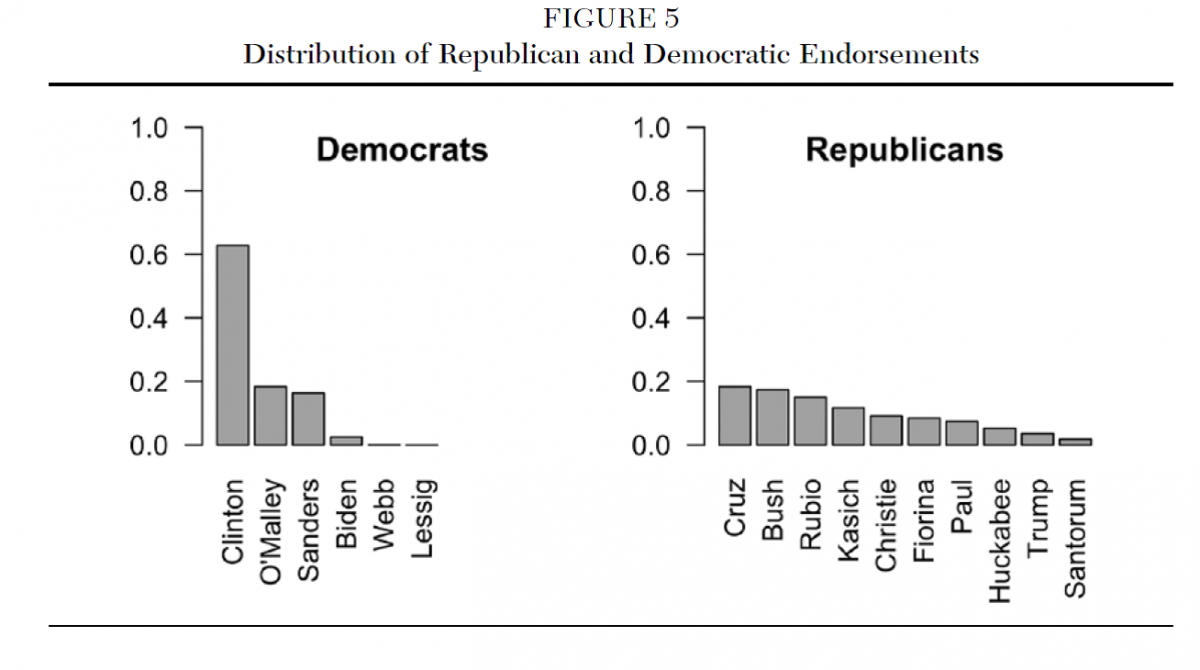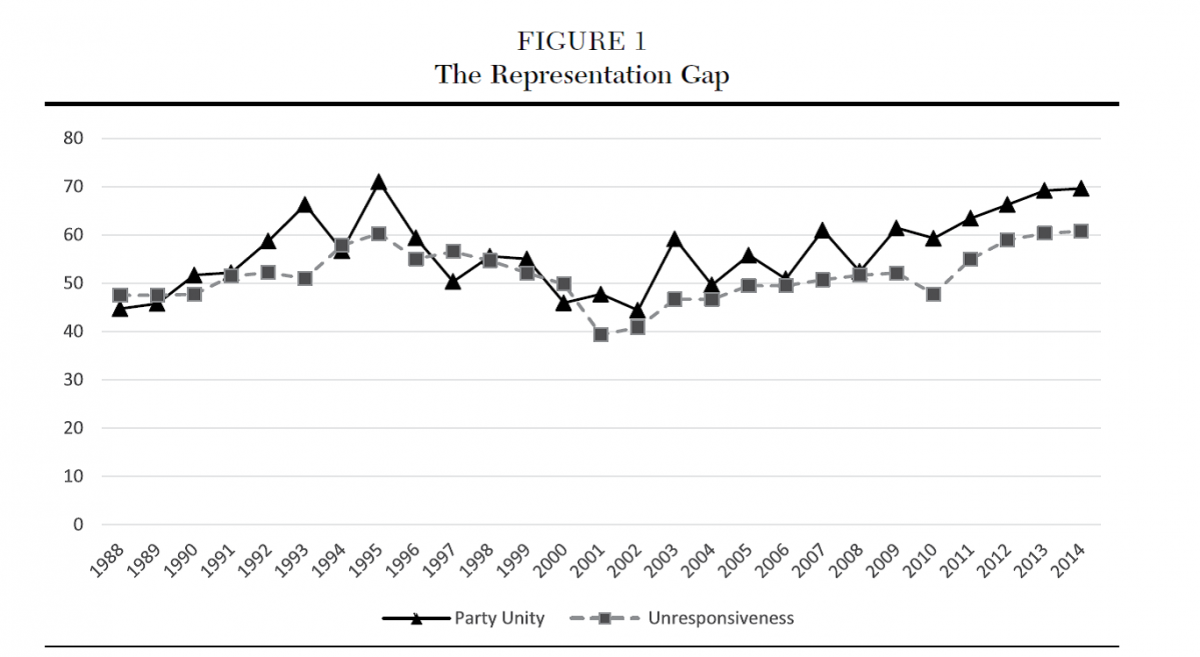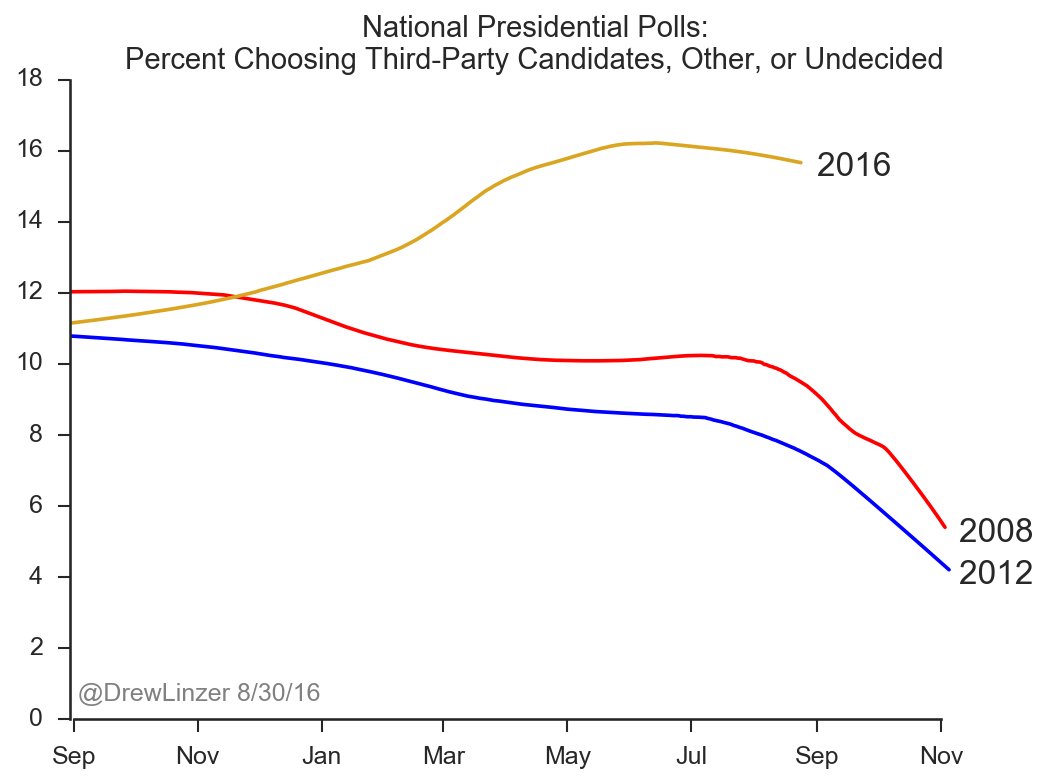Author Archives: Matthew Dickinson
Live Blogging the Second Presidential Debate
Private Parts and October Surprises
Was this the October surprise? Last week, in an interview previewing the vice presidential debate, I was asked about the possibility of an “October surprise” – an unexpected event that could potentially shake up the presidential race. I noted that these events are inherently unpredictable but that historically the presidential campaign enters its most stable period during October, largely because most likely voters have made up their minds regarding who they will support, and the number of remaining undecideds dwindles throughout the month. The bottom line, I suggested, is that we were unlikely going to see anything that would change the dynamics of the 2016 race.
Then came the release of audio from 2005 revealing Donald Trump’s deplorable comments regarding his views toward women. The media reaction has been overwhelming, to say the least, with the story dominating the Sunday news shows and social media. Pundits have gone into overdrive, predicting that Trump’s remarks constituted an “extinction-level event” that essentially ended the already long-shot chance he had of winning this race, and which might cost Republicans control of the Senate and possibly even the House. Reacting to the news, Republican Party leaders are deserting the Trump campaign as fast as they can with many saying they won’t even vote for him, never mind endorse his candidacy.
Count me as one who thinks that Trump’s “latest” comments (made in 2005) – as reprehensible as they are – are unlikely to have nearly the impact on this race that the pundits claim. This is not to say they aren’t damaging to Trump’s campaign – they are, in large part because with less than a month remaining in the campaign they detract from his ability to focus on the issues – such as trade policy, immigration and terrorism – that potentially might win over some of the dwindling number of undecided voters. However, the fact is that after a period of weeks during which the race undoubtedly tightened – mostly because of Clinton’s absence from the campaign trail combined with a spate of bad news regarding her health and emails – her return to active campaigning seemed to be a stabilizing factor, topped off by a strong first debate performance. Since then, national polls showed her holding a relatively steady lead of 3-5% over Trump. That would be a sizeable gap for any candidate to overcome this late in the race, never mind one with Trump’s inability to focus on the fundamentals most favorable to his candidacy.
The other reason why his remarks might create less damage is that his supporters have shown a deep and abiding distrust of the very people – media pundits and Republican Party leaders – who are the most vocal in condemning Trump’s remarks. Recall that Trump received almost no party support prior to the Iowa caucuses, as documented by Hans Noel, even as he led national polls for most of the pre-election period.

Moreover, as J. Eric Oliver and Wendy Rahn point out, we are in a period of heightened party unity in Congress, as measured by how often the two parties vote together as a bloc, combined with a strong belief among adult Americans that our governing institutions do not represent the people, but instead are controlled by elites.

This “representation gap” is the largest since the mid-1990’s, a period – not surprisingly – in which other candidates sporting a populist message, including Ross Perot and Pat Buchanan, found surprisingly strong electoral support. Because Trump draws so much of his support from people who believe our governing institutions and political elites, including major party leaders, the media, and the political activists who dominate social media, do not represent their interests, I think it highly unlikely they are going to take their cues from individuals in these groups who are now so visibly condemning Trump’s remarks. This is not because they agree with those remarks – it’s because they care more about the core issues that brought them into Trump’s camp in the first place.
I’ll be on later tonight live blogging the second presidential debate at https://sites.middlebury.edu/presidentialpower/ See you in a few minutes.
Live Blogging the First Presidential Debate
Live, from the Karl Rove Crossroad Cafe at Middlebury College, I’ll be up here live blogging beginning at 9 p.m. – please join in using the comments section!
Why Clinton Supporters Shouldn’t Panic
First the bad news for Clinton supporters. The national polls have indisputably tightened since Clinton’s peak post-convention bounce in early August. On August 8, the HuffPost aggregate polling had her up by 8.4%, 48.3%-39.9% over Trump, consistent with pundits’ predictions that this would be a blowout election. As of today, however, her aggregate lead is down to 5.4%, a loss of about 3% in the aggregate polls during the last month. 
The RealClearPolitics poll of polls shows a similar trend, with Clinton’s lead dropping from 7.2% to 3.9% in the same time period.
Now for the good news. This race was always going to tighten, as I have been telling audiences for my election talks for the past month. Those who point to 1964 or 1972 as electoral precedents in which an ideologically extreme candidate got crushed are misreading history. As Andrew Gelman points out, the results in those two elections were likely driven more by the economic fundamentals than they were by Goldwater or McGovern’s ideological extremism. Gelman’s point is consistent with recent research that suggests ideological extremism in candidates contributes only marginally at best to presidential election outcomes. To this I would add two points. First, it’s not clear to me that voters consider Trump an ideologically “extreme” candidate. For what it is worth, I’ve been surveying Republican delegates who attended the national convention, and they routinely place Trump to the ideological left of where they place the average Republican voter – that is, closer to the center of the ideological spectrum. Granted, their views are likely colored by their own more conservative attitudes, but nonetheless this is not consistent with the argument that Trump is an ideological extremist. The second point is that in both 1964 and 1972, the race included an incumbent seeking a second term in office during a time of relative economic prosperity, which likely worked in the incumbents’ electoral favor. Obviously, no incumbent is on the presidential ballot in the 2016 race.
Consistent with this argument, the political science forecast models that are just coming out almost uniformly indicate that this will be a close popular vote, with most forecasting a final two-party popular vote margin of 4% or less. A plurality of the models that I have seen give Clinton a slight edge in the popular vote, but some of those with excellent track records, such as Alan Abramowitz’ Time For a Change model, are forecasting a Trump victory.
Wait, you ask: why is a forecast that this will be a tight race good news for Clinton? To begin, as I noted in my last post, Trump is – so far – still slightly underperforming the models. Yes, he’s closed the gap – but not yet to where the forecast models suggest the generic Republican candidate should be. Consider as well that Clinton has largely ceded media coverage to Trump for the last few weeks as she has focused on raising cash through at a series of big-ticket fundraising extravaganzas and, evidently, spending time preparing for the debates as well. Moreover, her absence has coincided with a flurry of bad media coverage driven by the release of the FBI interview notes regarding her emails, as well as allegations that she was engaged in a pay-to-play contribution scheme involving donors to the Clinton Foundation. Although her surrogates have been out on her behalf trying to beat down these stories, they haven’t gotten nearly the coverage that Trump has attracted – coverage that he has utilized to highlight Clinton’s email and Foundation stories. As a result, her favorable/unfavorable gap – already in negative territory – has grown by about 5% since early August, and is now only about 5% better than Trump’s.
Moreover, polling remains volatile; we’ve seen the polling gap close in similar fashion at least twice before since both nominees clinched. Since May, Trump has closed to within 4% of Clinton on at least two occasions in the HuffPost aggregate polls, only to see her subsequently widen the gap again. And this latest polling flurry hasn’t boosted Trump above his post-nomination clinching high-water mark of about 42% support. So there’s not a lot of evidence that Trump is expanding his coalition these last few months. Instead, what the recent spate of negative media seems to have done is make some who recently might have been predisposed to vote for Hillary to reconsider their support for her, but there’s not much evidence they are moving over to back Trump.
It is true that, as Drew Linzer documents, between those who remain undecided or express support for a third party candidate, such as Libertarian Gary Johnson or the Green Party’s Jill Stein, we are seeing a historically high number of potential voters who aren’t committing to either major party candidate at this point.

And there’s some evidence that this group contains slightly more potential Trump voters (although as I noted in my last post other survey evidence suggests Clinton may have a slight advantage among undecideds).
![]()
But in the aggregate, the difference in the number of undecideds leaning Republican versus those leaning Democratic isn’t going to be enough to put Trump over the top – he has win a substantial number of the “pure” independents as well.
So where does that leave us? If I were a Clinton supporter, I would be more worried if Trump’s gains in the polls were occurring while Clinton was in full-blown campaign mode, out making her case to the voters. Right now that’s not the case. However, let’s see where things stand in mid-September – which is historically about two weeks after the final convention has ended. If Trump has closed to, say, 2%, then Clinton supporters can panic. As of today, however, they should ignore the polls and instead head to nearest swimming hole to enjoy this gorgeous summer weather. That’s where I’m going.
